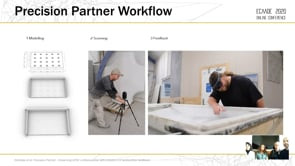
Precision Partner
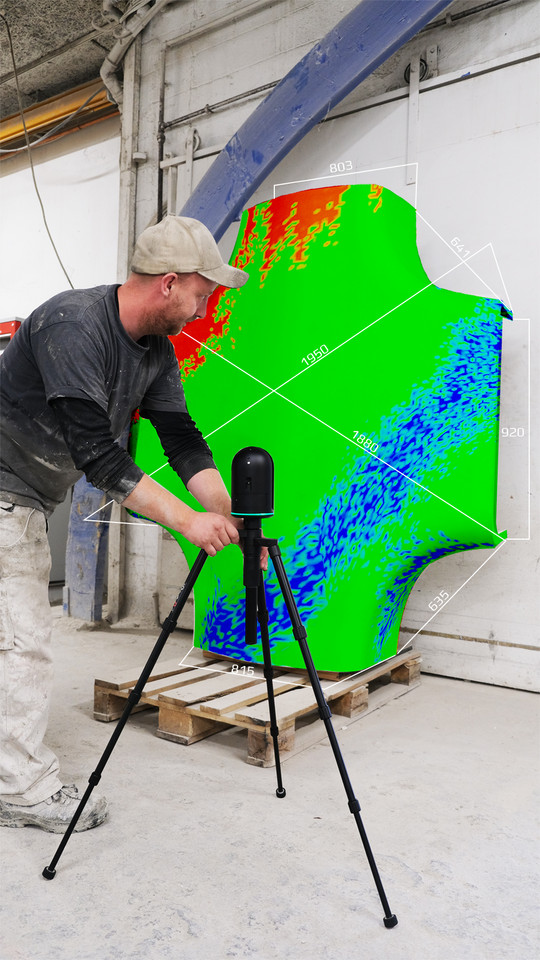
The Precision Partner project asks how to reconcile skilled craft-based industries such as GRC manufacturing with higher precision digital-chain workflows.
The project explored how Build 4.0 technologies can be implemented on the factory floor to enable digital precision, quality assurance and direct feedback in physical craft-based production. During the project period we have developed and connected four key interacting considerations:
- Proposing a methodology and associated automated modelling tools that ensure precise geometric definition and enable automated calibration of 3D scans during production
- Assessing state of the art for 3D scanning large moulds easily, quickly and accurately.
- Demonstrating automatic comparison between the captured 3D pointcloud and the digital model, and detection and quality report of deviations of dimension and surface geometry
- Exploring and creating ‘factory floor’ protocols for feedback of deviations directly on the mould.

The project results include the identification and successful implementation of protocols and pipelines appropriate for quality control for small-batch mould design and making in shop floor environments. We have developed and tested a working software prototype that:
- automates dimensional comparison between digital design geometry and 3D scan, and
- provides feedback appropriate to the dimensional tolerances of concrete and shop-floor operations via a screen based interface and augmented reality.
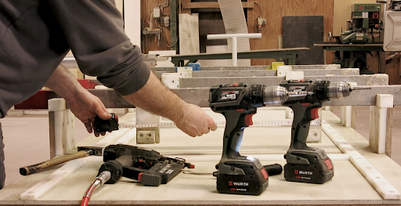
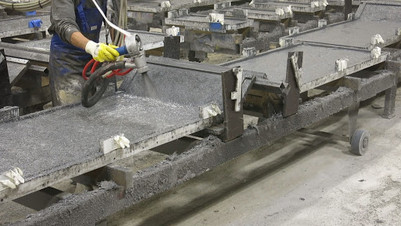
The project has tested and compared state of the art 3D scanning products for compatibility with concrete factory environment and workflow. We have found that while the field is moving rapidly, well-suited scanning products do not yet exist. In particular, the narrow geometries of large molds present a challenge. The project has also successfully tested shop-floor feedback via Augmented Reality devices (Hololens 2), enabling deviations to be visualised in real-time onto the actual mold on the shop floor. Here, our testing has established that the Hololens 2 is currently not currently well suited to a factory environment pga. overheating and dust.
Our research context, work packages and results are documented in a summary report available on this page. This report firstly introduces the research context and central problem: that existing approaches to automation take the perspective of large scale and high-volume manufacture, whereas mould making practices in the construction industry are typically high variety, small batch size, and include significant expert handwork.
It then details the three work packages – development of the automated mould configurator, evaluation of multiple state of the art scanning tools (stationary, hand-held, robot-held), automated processing of the point cloud and comparison against a 3D model, and feedback via a user interface and augmented reality. Each of these sections is illustrated with case studies conducted during the research period. Lastly, our report provides an outlook for future work.
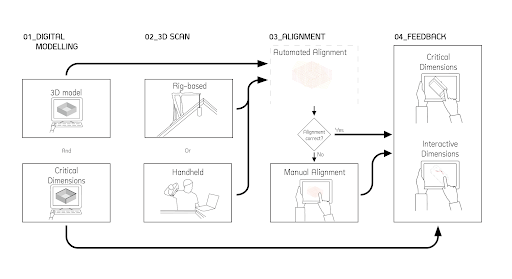
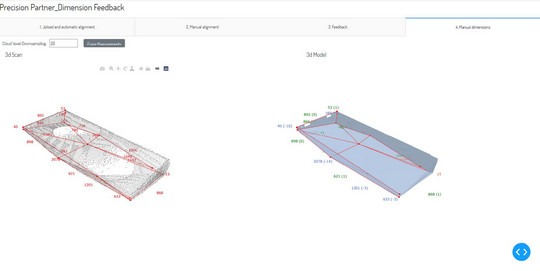
Publications
Nicholas, P., Rossi, G., Papadopoulou, I., & Hansen, L. J. (2020). Precision Partner Enhancing GFRC craftsmanship with industry 4.0 factory-floor feedback. In L. C. Werner & D. Köring (Eds.), Anthropologic: Architecture and Fabrication in the cognitive age - Proceedings of the 38th eCAADe Conference - Volume 2 (pp. 631–640). TU Berlin.












